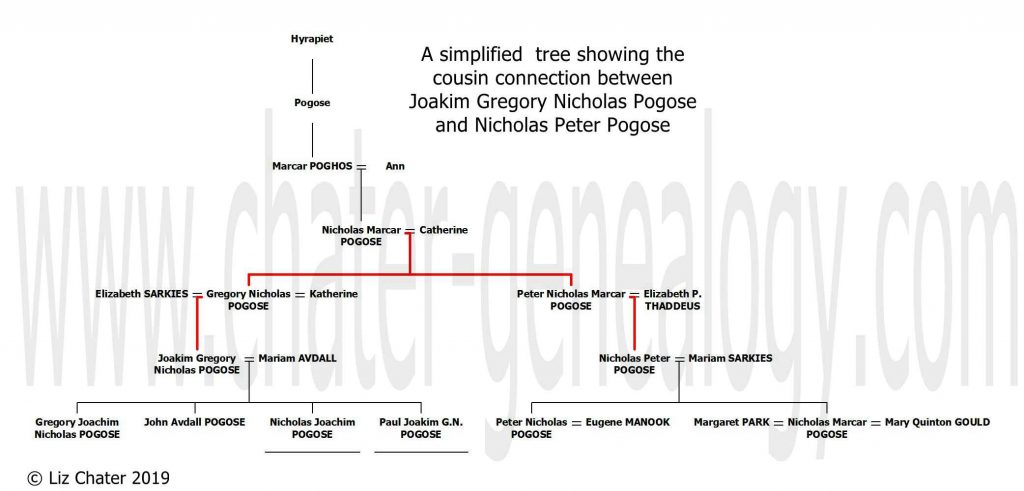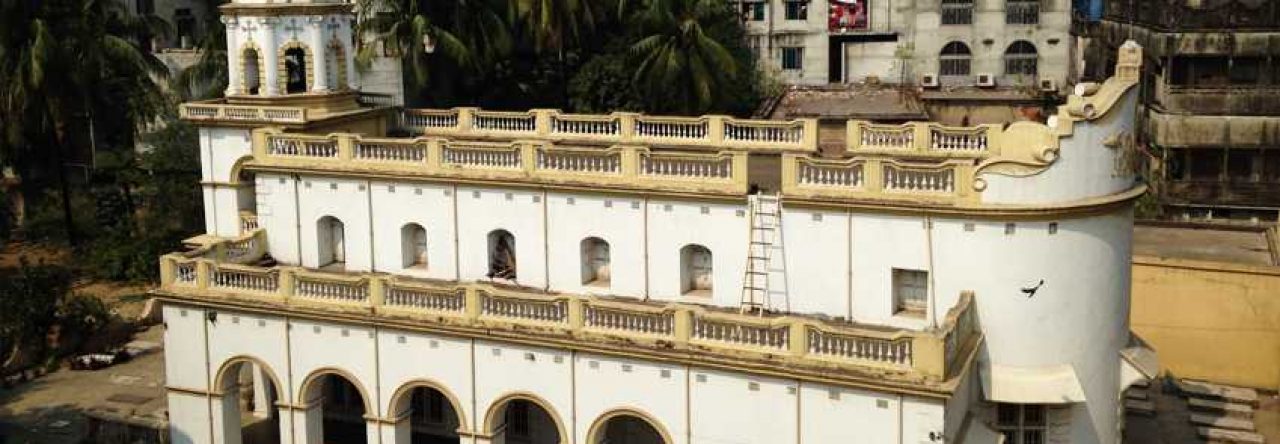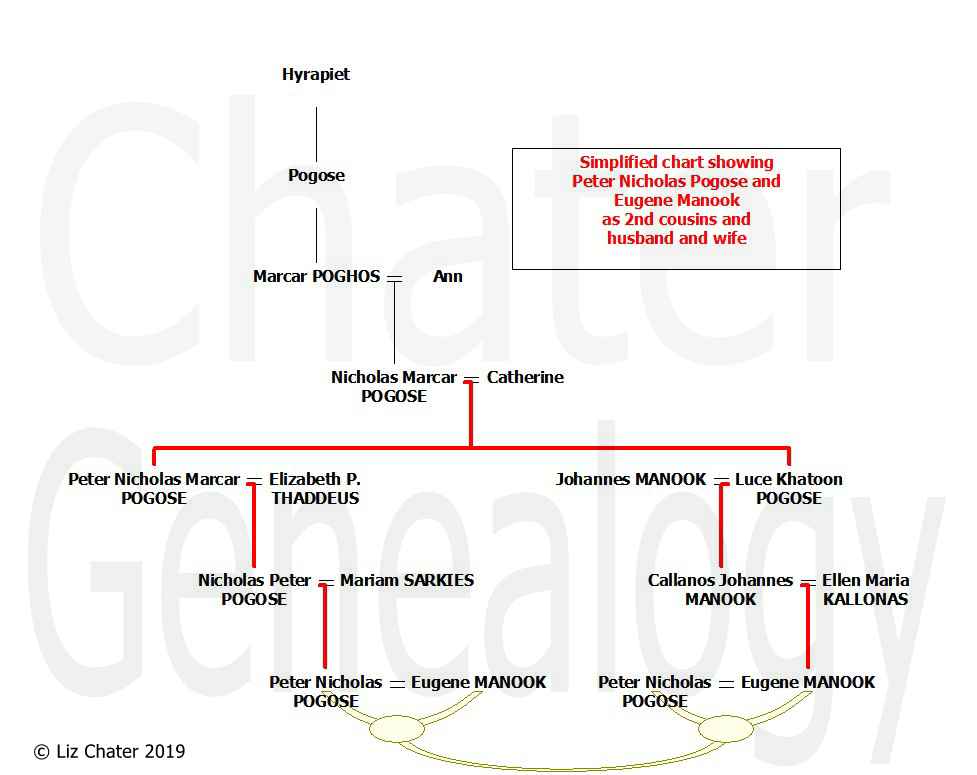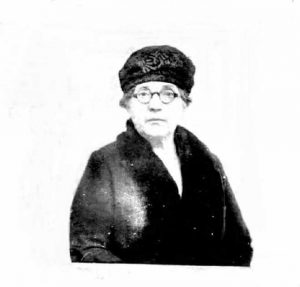Peter Nicholas Pogose the less successful cousin
Not all the Pogose’s were successful in life. Peter Nicholas Pogose had to learn at a very young age to live by his wits and words. He never really had the same flourish as his more successful cousin Joakim Gregory Nicholas Pogose the Pogose School founder.
In 1867 Peter’s father Nicholas was briefly one of four proprietors of the “Dhaka Daily News”, a Planter’s Journal issued weekly. Only 225 copies were printed and distributed. In 1876[1] he was also a Warden of the Armenian Church Dhaka, but during his lifetime was declared “hopelessly insolvent”. Nicholas’s son Peter Nicholas Pogose and his wife Eugenie née Manook seem to spend the majority of their lives playing catch-up and trying to avoid their creditors. Peter was embroiled in a spectacular court case for fraud, eventually being found guilty.
In 1884 Peter Nicholas Pogose, (son of Nicholas Peter Pogose[2] and Mary née Sarkies, and great grandson of Nicholas Marcar Pogose)[3], was embroiled in a sensational court case of fraud where it was alleged he used his marriage settlement to his wife (who was a minor) to deliberately avoid paying his ever growing and impatient creditors by ensuring his finances had been transferred in to his wife’s name, Eugene née Manook.
In June 1877 the Delhi and London Bank obtained a decree against him for a sum of Rs 11,076. Later that month Pogose entered into an agreement with the Bank Manager to pay them Rs 2,000 quarterly until the debt, including interest had been cleared. However, he dragged his feet in making payments and in August 1877 wrote to the Bank claiming he was having trouble finding the first instalment and asked for their patience in the matter until January 1878 when he indicated he would be in a position to pay them. Between September 1877 and February 1878 he managed to find Rs 4,000 towards his debt. After the last payment on the 25th February of a measly Rs 490, Peter Pogose and his wife immediately left Dacca and sailed for England, no further payments were made. The Bank’s patience waning, they applied to the Mymensingh Court for an execution of an attachment to his properties in that district. In June 1880 Pogose put in a claim stating that on the 5th November 1877, the day prior to his marriage to Eugene Manook he has entered into an ante-nuptial settlement in which his properties in Mymensingh were part of that agreement [a modern day pre-nup] with her, and these properties rested with Eugene for her life, and after her death to her children by him. Astutely, Pogose had ensured a clause in the marriage settlement that stated his wife was to support him for his lifetime, and concluded “…and that henceforth all my rights to the same shall cease to exist….” In June 1878 he took out a certificate to manage these properties on behalf of his wife. The courts could see he was trying to circumnavigate his financial situation, and dismissed this in December 1880 where it was stated that the settlement was “….no more than a mere ostensible transfer, carrying with it no change of ownership….” Further action was initiated by Eugene to declare her interest in the properties but it was concluded that the whole process had been set up with a view to “defraud the creditors of P.N. Pogose, and that the judgement-debtor, his father-in-law, Mr. Manook and friends had collusively got up the deed, with the object of protecting the properties of P.N. Pogose.” The courts decided that it was highly unlikely that Eugene’s parents didn’t know of Pogose’s financial woes and were colluding to try and minimise any repayments.

Simplified tree showing the cousin connection between Joakim Gregory Nicholas Pogose and Nicholas Peter Pogose
The courts were simply not having any of the arguments put before them, and concluded: “… at the time when Mr. Pogose was hopelessly in debt, he contracted a marriage, in consideration of which he settled whatever property he had upon his wife and children, subject to his maintenance, and a debt which had previously been charged on the property in dispute. The circumstances under which the deed was executed, as well as the nature of the transaction, tend to show that the conveyance was made with a view to screen the property from the creditors.” The Court went on: “…before the marriage between Mr and Mrs Pogose, they had been related to each other, and it is probably that Mrs. Pogose and her parents were aware of the insolvent state of Mr. Pogose, when the conveyance was executed………..The fact that Mr. Pogose conveyed all his property charging it with his maintenance and the payment of the mortgage debt only, in consideration of his marriage to Mrs. Manook, who did not in return advance any sum to, or place any property at the dispose of Mr. Pogose, clearly tends to show that the settlement was made under the cloak of marriage with a view to defraud creditors.”
The court described Mr. Pogose and that of his family: “…Mr. Peter Nicholas Pogose, against whom the decree has been obtained, was the son of Mr. Nicholas Petroos Pogose, who is now dead. The latter was once a gentleman of very large property; but he became hopelessly and notoriously insolvent, and his property was assigned to trustees for the benefit of his creditors. The first witness for the plaintiff, who has been in the service of the Pogose family as mohurir since the year 1841, described the property of Mr. Pogose’s father as worth seven or eight lacs of rupees, whilst his debts were upwards of twelve lacs.
The plaintiff was a second cousin of her husband, and the daughter of Mr. and Mrs. Carlo (sic) Johannes Manook. The plaintiff at the time of the marriage was sixteen years of age; and we are told by her parents that the proposals for the marriage took place in 1876, about a year before the marriage. Mr. Pogose had a one-seventh share of his mother’s property, which consisted of an 8-anna share in an estate in Mymensingh, and in four other smaller properties in Backergunge. There was no honest reason, so far as we can see, why Mr. Pogose should have so completely denuded himself [financially]; and it does not appear that Mrs. Pogose brought anything whatever into the settlement.
We entirely agree with the Courts below that the manifest object of this transaction was to defraud Mr. Pogose’s creditors.
At the time of his marriage, Mr. Pogose still owed the Bank upwards of Rs 10,000, he owed his solicitors Rs, 4,000; and there is evidence of three other Small Cause Court decrees being out against him, which were taken at the hearing before us to amount to Rs 3,000. He therefore owed at least Rs 17,000; and it is possible, of course, that his debts may have been very much larger.”
Peter Pogose inherited nothing from his insolvent father, but rather his mother. Desperate times call for desperate measures, but his plan was never going to work.
“It must be borne in mind, that the Manooks were nearly [closely] related to the Pogose family. They must have known perfectly well, what was notorious through the country at the time, that Mr. Pogose’s father, who was once a man of fortune, had become hopelessly insolvent. Mr. Manook could hardly under such circumstances have allowed his daughter to marry Mr. Pogose without ascertaining his pecuniary position. And considering that Mr. Pogose’s Babus were perfectly aware of his indebtedness, it seems impossible to suppose that Mr. Manook should not have known this.
Then the extraordinary character of the settlement itself appears to us a clear indication of fraud.
Then, what was the value of the property settled? His father had died hopelessly insolvent. [Since the marriage] he has ever since managed the property and been in receipt of the rents and profits of it, through his brother, Mr. Carr Pogose. So soon as Mr. Pogose had paid the Bank Rs, 2,000 in February 1878, he at once went off to England with Mrs. Pogose, and so far as appears, he has been there ever since”
In addition, the Court observed: “Further evidence indicated that Mrs. Pogose returned to Dacca after a year in England, only to go back to England again, Mr. Pogose never having set foot back in India[4] after the court case and both of them NEVER having made a personal appearance during any part of the hearing.”
Their appeal was dismissed and Mr. and Mrs. Peter Nicholas Pogose were found guilty of fraud.
After the court case, and by 1883 he had moved his family to England, their next child, Lily was born in Paddington in March of that year.
Another child, Gladys was born in India in April 1884, but the peripatetic lifestyle of Peter and Eugene was such that Gladys was baptised in London in November of that year.
Two further children were born in England; Weenie in 1886 and Kate in 1887.
Whilst Eugene had 7 young children to look after ranging from 11 years to a new born baby, Peter once again got himself into trouble in 1887.
This time, he found himself in court charged with fraud and perjury. The newspapers reported the case over several days and it would appear he had changed his name slightly, to perhaps put off the scent from India. In England he was Peter Nicholas Thaddeus Pogose, a law student, but no record can be found for him passing any law examinations. In the Shrewsbury Conspiracy Case, the courts found him guilty and he was sent to prison for four months hard labour. In the Staffordshire Chronicle[5] it was reported that “..he had begun life as a ‘law student’, but had taken to bill dealing……” One newspaper did report a whiff of his previous bankruptcy[6] but did not dwell on it, preferring to report on the current case, rather than what had happened in the past.
Reinventing himself for a second time because of his fraudulent way and trying to put Dacca into a dim and distant past, he turned to the United States, putting miles and years between him and his fall from grace in Bangladesh. He found respectability – eventually. It is unclear exactly when he arrived in the USA, but it is thought that once he had served his prison term, he left England to seek another new start, his wife and children joined him there in 1890.
The last two offspring of Peter and Eugene were born in New York; Leslie in 1895 and Olivette in 1898.
He became a travelling salesman for ink and printing products. Working for the Jaenecke Printing Co[7]., in New Jersey, he regularly travelled around the US and by all accounts, was well liked and respected.
The Eagle newspaper in Texas noted on 23rd July 1912:
“N.P. Pogose of New York State spent last night and today in Bryan. He is travelling salesman for Jaenecke Printing Ink Co., and has been travelling for twenty-nine years. We find him a very agreeable old gentleman and hope he will make Bryan often.”
He must have been doing very well for himself because he listed in the Classified Ads of “The Record” in 1915 a New Jersey paper, that he had a six roomed flat with “bath and all improvements” to let, as well as a large store and office[8]. However in the same newspaper in May 1916 Nicholas was found guilty and fine $50 with costs of $18.40 for maintaining a disorderly house and a gambling den.[9]
Descendants of Peter and Eugenie’s children all now live in the USA. Peter passed away in May 1925 in New York, Eugenie passed away in December 1949 also in New York. A long way from the family lands and Zamindari of Dacca, they are buried together in Rockland Cemetery, New Jersey.
[1] ‘The Indian Mirror’ of 28th November 1875
[2] Nicholas Peter Pogose is often incorrectly attributed as the founder of the Pogose School. He was not. It was his cousin, Joakim Gregory Nicholas Pogose, also known as “Nicky” who founded the school. Nicholas can be found listed as the Secretary at the school rather than the founder and headmaster. See Bengal Directory 1875 for entry.
Nicholas Peter Pogose lost his father, Peter Nicholas Pogose at the age of 12. Nicholas’s mother Elizabeth re-married in 1842 a year after her husband’s death to Deare John Christian the son of a Jewish Polish immigrant. Evidence of Nicholas Peter Pogose being in early education at the time of the founding of the Pogose School lends additional weight that he could not have started the Pogose School. This can be seen in the “General Report on Public Instruction in the Lower Provinces of the Bengal Presidency for 1845-46” where Nicholas Peter Pogose is noted as having obtained a ‘junior scholarship’ at the Dacca College aged 15 in June 1846. The report notes that some students in this school continued education there until they were in their early 20’s. Certainly, Nicholas Peter Pogose would not have been equipped nor experienced enough between the ages of 15 and 17 to create the Pogose School by June 1848 when he would have been just 5 months shy of his 18th birthday. Furthermore, Nicholas Peter Pogose spent a great deal of his early adult years fighting debtors and bankruptcy and was never as successful as his cousin Joakim.
[3] See family tree below for a better understanding of this branch of the Pogose stem
[4] This couldn’t have been the case, because their first three children, Nicholas, Eva and Richard were all born in India between 1878 and 1881.
[5] 27th November 1887 P.6
[6] He had a County Court Judgement against him dated 9 January 1882 for £17-16s-2d, at today’s values that is approximately £1,700. (see “Extracts from the Register of County Courts” Commercial Gazette 2 February 1882). The address for him at the time was given as Rose Lawn, Catford Bridge, London.
In January 1883 he was declared bankrupt, and Trustees Robert Lindsay and Sidney Smith were appointed to oversee the property and debts of Pogose, his address at the declaration of bankruptcy was 2 Roseford Terrace, Shepherds Bush, London.(See London Gazette 27 February 1883 P.1170). By July 1885, his long-suffering wife, Eugenie appears to have entered into a “Bill of Sale Agreement” with a Thomas Bromwich for the sum of £150 (Today’s value would be around £15,000). She is described as ‘wife of Peter Nicholas Pogose of 10 Wharton Road, Addison Park, London’. By putting the debt in her name, was this a case of Eugenie being used once more by her husband to try and get himself out of trouble, just the same way it was disclosed in the Court Case in India?
[7] The Tampa Tribune, 30 October 1906
[8] The Record, Hackensack New Jersey 25th April 1915 P.7
[9] The Record, Hackensack New Jersey 20th May 1916. P.1


